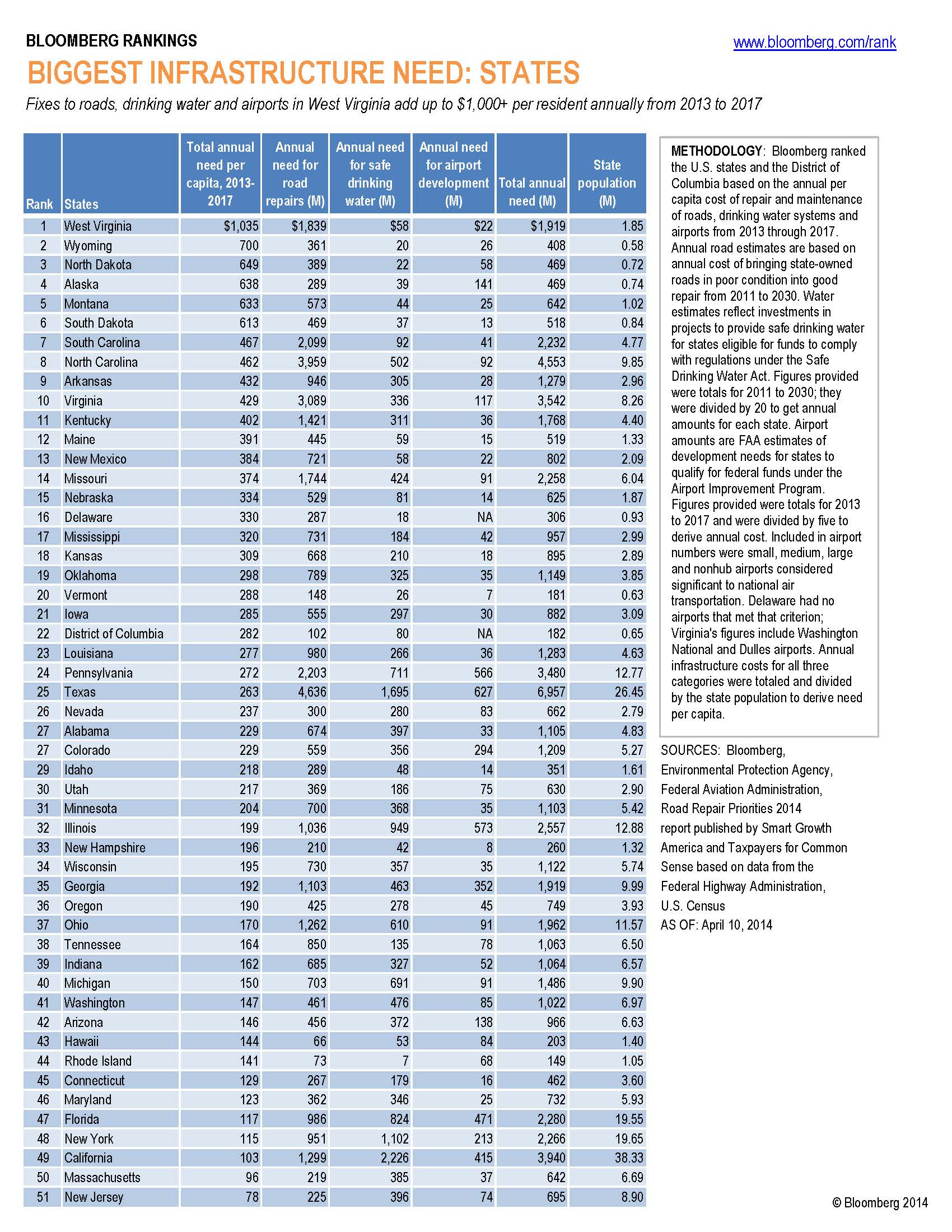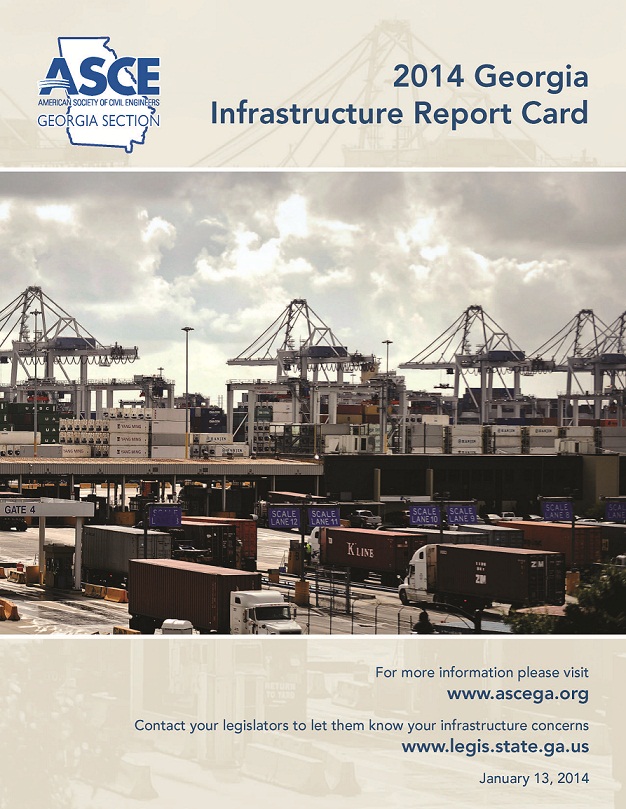Senator’s 2020 Vision For America’s Infrastructure
January 27th, 2015 | By: Becky Moylan
Aging infrastructure, graded at a D+ national GPA, is no secret. In fact, it is the news each and every day. From a water main break that hindered a morning commute in DC, to the potholes that inhibit safe driving, Americans across the country are experiencing inconveniences and challenges because of deficient roads, bridges, water pipes and other infrastructure. Furthermore, we have an investment shortfall across our major infrastructure sectors of just over $200 billion a year. Underinvesting in these vital systems costs us more in the long run. Today, Sen. Sanders shared his bill as a vision to better fund infrastructure and address the backlog of needs. As the new ranking member of the Senate Budget Committee, Sen. Sanders is taking the opportunity to introduce a $1 trillion, five-year plan for the nation’s infrastructure. The measure would inject an additional $75 billion a year into the Highway Trust Fund, create a national infrastructure bank and expand financing and grant programs. Additionally, it would fund freight and passenger rail improvements, airports, water projects, ports and inland waterways and national parks, along with broadband and electric networks. ASCE’s Casey Dinges joined the Senator from Vermont to share our vision of what needs to happen to improve our nation’s infrastructure. During his remarks, Casey said “By taking steps to invest in our nation’s infrastructure, the U.S. can protect $3.1 trillion in GDP, $1.1 trillion in U.S. trade value and 3.5 million jobs and a little over $3,000 a year per family. Without these investments, infrastructure – the backbone of our nation’s economy – will continue to decline and Americans will pay the price.” With the need to #FixTheTrustFund looming ahead, this bill is a positive step in the conversation and a good reminder that inaction is not an option.Tags: #fixthetrustfund, aviation, bridges, report card, roads, transportation
3 Comments »
The Power of a Coalition
January 26th, 2015 | By: America's Infrastructure Report Card
The following is a guest post by Kevin M. Burke, President and CEO of Airports Council International-North America. Prior to joining Airports Council International-North America (ACI-NA) as its president and CEO in January 2014, I spent 13 years at the helm of the American Apparel & Footwear Association. In my role at AAFA, I traveled frequently, visiting manufacturers across the world. One thing that always struck me was that in many developing countries, their airports were exceptional facilities. The U.S. is home to far and away the world’s safest commercial aviation system, of which our airports play a fundamental part. But making sure that our airports continue to connect passengers and cargo shippers safely, securely, and efficiently to opportunities throughout the world requires fresh thinking in how we invest in upgrading and modernizing aging facilities. Here in the U.S., we have a spate of infrastructure and capital improvement projects ready to tackle at airports of all sizes—from our smallest regional airports to our largest international hubs. All told, there are more than $71 billion in projects necessary in the next few years just for us to keep pace with increasing capacity demands and the intended lifespan of current facilities. As other modes of transportation are well aware, though, it’s one thing to identify that we need to make investments in infrastructure, and another challenge entirely to agree on how to fund these projects. That’s where the power of a coalition emerges. For airports, our fiscal course is set by FAA Reauthorization, which is reviewed by Congress every five years. With 2015 being such a year, our efforts actually began in earnest in the summer of 2014, with the launch of AirportsUnited and the bringing together of not just our traditional airport partners, but also allies across a broad spectrum of interests and industries. To date, the AirportsUnited Beyond the Runway coalition—of which we’re proud to call ASCE a member—is more than 20 strong, ranging from travel and tourism to construction and engineering. By joining together under the same banner, we share a dynamic, unified voice on behalf of U.S. airports and the tremendous economic contribution they make. We’ve got our work cut out for us over these next several months, but as our coalition can readily attest, a global leader deserves world-leading infrastructure, and U.S. airports are no exception.Tags: aviation
No Comments »
The Time is Now to Invest in Airports
October 2nd, 2014 | By: America's Infrastructure Report Card
Travel delays at airports have become all too common place. In fact, the surprise usually is that a flight makes it to its destination on time (or if the travel gods are feeling particularly generous, you might make it to your destination a few minutes early). Some of this is beyond anyone’s control: weather patterns and airplane mechanical problems to name a few. But part of this problem is most certainly self-imposed. Inadequate investment in the nation’s aviation system has real consequences, beyond simply making you a few minutes late for check-in at your arriving hotel. In ASCE’s 2013 Report Card for America’s Infrastructure the Society gave a grade of “D” to the aviation sector. Our Failure to Act report highlights the sobering reality that this lack of aviation sector investment has on the broader U.S. economy: a projected $313 billion in loss of GDP by 2020 and 350,000 fewer jobs throughout the economy by 2020. The Society’s dedication to this issue does not stop with economic reports, but rather this data is the gateway to engaging elected officials to act on solutions to these problems. That is why ASCE recently joined with aviation sector stakeholders, such as airports and state legislators, to supports an increase in the passenger facility charge (PFC) cap which would allow airports to raise necessary funds locally for improving the nation’s aviation infrastructure. Funds raised through PFCs are only eligible for use at the airport in which they were collected and can be used on projects to preserve or enhance the safety, security and capacity of the national air transportation system. This funding solution is expected to be under consideration when Congress turns its attention crafting to a broader Federal Aviation Authorization (FAA) reform bill early next year. Until then, you can show support for an improved aviation system by writing your Members of Congress here and using the hashtag #AirportsUnited to help spread the message. It’s time to take human error related to political gridlock out of the equation when it comes to getting travelers to their destinations safely, on-time and hopefully with a little less stress.Tags: Airports, aviation, infrastructure, transportation
1 Comment »
Sometimes It's Best to Look Beneath You: A Successful Geothermal Project at Portland International Jetport
July 1st, 2014 | By: Infrastructure Report Card
 Commit to Success
America’s infrastructure needs a national commitment to bring existing infrastructure into a state-of-good-repair, and in the long term we must modernize and build in a targeted and strategic manner. This means leadership at the federal, state, and local levels of government, by businesses and individuals, to communicate the importance of our nation’s infrastructure, to craft innovative solutions that reflect the diverse needs of the nation, and to make the investments the system needs. By employing strategies to use every dollar more efficiently and by deploying creative solutions to infrastructure development such as public–private partnerships, we can implement the right projects on time at the right price.
Airport Finds Sustainable Success Underground
Commit to Success
America’s infrastructure needs a national commitment to bring existing infrastructure into a state-of-good-repair, and in the long term we must modernize and build in a targeted and strategic manner. This means leadership at the federal, state, and local levels of government, by businesses and individuals, to communicate the importance of our nation’s infrastructure, to craft innovative solutions that reflect the diverse needs of the nation, and to make the investments the system needs. By employing strategies to use every dollar more efficiently and by deploying creative solutions to infrastructure development such as public–private partnerships, we can implement the right projects on time at the right price.
Airport Finds Sustainable Success Underground The centerpiece of the Portland International Jetport’s $75 million terminal expansion project was the installation of a geothermal heating and cooling system that reduces operating costs and emissions. A creative first in the airport industry, the $3 million project was able to make use of a $2.5 million Federal Aviation Administration (FAA) Voluntary Airport Low Emissions (VALE) grant.
The system will maintain a constant temperature inside the terminal building by injecting heat into the ground during the summer and taking heat out of the ground during the winter. The system has 23 miles of high-density polyethylene piping and 120 ground wells that reach as deep as 500 feet. The system moves more than 475 gallons of water per minute with a 125 horsepower pump.
The new systems replace an oil-fired system and will save $160,000 in operating costs and prevent the emission of 1,000 tons of carbon per year, promoting both healthier infrastructure and alternative energy.
The centerpiece of the Portland International Jetport’s $75 million terminal expansion project was the installation of a geothermal heating and cooling system that reduces operating costs and emissions. A creative first in the airport industry, the $3 million project was able to make use of a $2.5 million Federal Aviation Administration (FAA) Voluntary Airport Low Emissions (VALE) grant.
The system will maintain a constant temperature inside the terminal building by injecting heat into the ground during the summer and taking heat out of the ground during the winter. The system has 23 miles of high-density polyethylene piping and 120 ground wells that reach as deep as 500 feet. The system moves more than 475 gallons of water per minute with a 125 horsepower pump.
The new systems replace an oil-fired system and will save $160,000 in operating costs and prevent the emission of 1,000 tons of carbon per year, promoting both healthier infrastructure and alternative energy.
Tags: aviation, energy, Maine, report card, success, sustaina
1 Comment »
How Much Would You Owe If Everyone's Infrastructure Bill Came Due?
April 29th, 2014 | By: Infrastructure Report Card
Bloomberg took the opportunity to calculate your infrastructure bill for you based on where you live. See what you would owe for roads, safe drinking water, and airport infrastructure if every one in every state had to pay their bill today.
Tags: aviation, bill, infrastructure, rank, roads, water
1 Comment »
Georgia's Infrastructure Is On Our Mind
January 8th, 2014 | By: Infrastructure Report Card
 The 2014 Report Card for Georgia’s Infrastructure will be released next Monday, January 13th, in the South Wing of the State Capitol on the very first day day of Georgia’s legislative session. Highlighting the infrastructure needs across the state, the Report Card will provide a new GPA for Georgia’s infrastructure as well as new grades for specific areas — Aviation, Bridges, Dams, Drinking Water, Energy, Parks and Recreation, Ports (new), Rail (new), Roads, School Facilities, Solid Waste, Stormwater, Transit, and Wastewater.
Check back here on the 13th to find out what grades Georgia earned in the 2014 Report Card for Georgia’s Infrastructure! If you’re a supporter of Georgia’s infrastructure and in the Atlanta area, we invite you to join us for the Report Card release event:
WHAT: News conference for the release of the 2014 Report Card for Georgia’s Infrastructure
WHO: American Society of Civil Engineers, Georgia Section
Speakers: Georgia State Representative Ed Setzler
Kat Gurd, President of the Georgia Section of ASCE
Daniel Agramonte, Co-Chair of Report Card Committee
WHEN: Monday, January 13, 2014, 11:30 AM
WHERE: State Capitol South Wing
Georgia State Capitol Building
206 Washington St SW
Atlanta, Georgia 30334
WHY: Infrastructure has a direct impact on our lives every day—from the water we drink, to the schools our children attend and to the roads and rails we travel. Infrastructure is vital to our economy, security, recreation and safety. Will Georgia’s infrastructure systems make the grade?
The 2014 Report Card for Georgia’s Infrastructure will be released next Monday, January 13th, in the South Wing of the State Capitol on the very first day day of Georgia’s legislative session. Highlighting the infrastructure needs across the state, the Report Card will provide a new GPA for Georgia’s infrastructure as well as new grades for specific areas — Aviation, Bridges, Dams, Drinking Water, Energy, Parks and Recreation, Ports (new), Rail (new), Roads, School Facilities, Solid Waste, Stormwater, Transit, and Wastewater.
Check back here on the 13th to find out what grades Georgia earned in the 2014 Report Card for Georgia’s Infrastructure! If you’re a supporter of Georgia’s infrastructure and in the Atlanta area, we invite you to join us for the Report Card release event:
WHAT: News conference for the release of the 2014 Report Card for Georgia’s Infrastructure
WHO: American Society of Civil Engineers, Georgia Section
Speakers: Georgia State Representative Ed Setzler
Kat Gurd, President of the Georgia Section of ASCE
Daniel Agramonte, Co-Chair of Report Card Committee
WHEN: Monday, January 13, 2014, 11:30 AM
WHERE: State Capitol South Wing
Georgia State Capitol Building
206 Washington St SW
Atlanta, Georgia 30334
WHY: Infrastructure has a direct impact on our lives every day—from the water we drink, to the schools our children attend and to the roads and rails we travel. Infrastructure is vital to our economy, security, recreation and safety. Will Georgia’s infrastructure systems make the grade?
Tags: aviation, dams, Georgia, infrastructure, ports, roads, state, state report card, transit, water
No Comments »
A Promising Week for Transportation Legislation
February 2nd, 2012 | By: America's Infrastructure Report Card
It’s been a whirlwind week in Washington, D.C. for transportation as both the House and the Senate try to build momentum to pass much-needed reauthorization bills. The House Transportation and Infrastructure Committee unveiled their American Energy and Infrastructure Jobs Act (H.R. 7) on Tuesday at a press conference outside the U.S. Capitol Building on an unusually warm winter day. The bill would reauthorize surface transportation programs for five years. The reforms included in the American Energy and Infrastructure Jobs Act would consolidate nearly 70 duplicative programs, expedite project delivery, create a set of performance measures, and enhance the TIFIA grant program. ASCE commends the House Transportation and Infrastructure Committee for advancing legislation to fund surface transportation programs. Read our letter to Chairman Mica. Meanwhile, the Senate Environment and Public Works Committee is busy working to advance their two-year reauthorization bill. Right now, it is farther along in the process than the House bill, as the Senate Finance Committee identifies potential pay-fors. It seems that both the House and the Senate are hoping to take credit for completing a reauthorization bill during this session, and that is good news for transportation. Another flurry of action surrounded the FAA reauthorization bill. After much deliberation between House and Senate leaders, there appears to be bipartisan support for a four-year FAA funding bill. The bill is expected to be voted on as early as tomorrow. We are at the mark-up today on the House transportation reauthorization bill and will be ready to share additional details on the status of both bills tomorrow.


 */ ?>
*/ ?>















